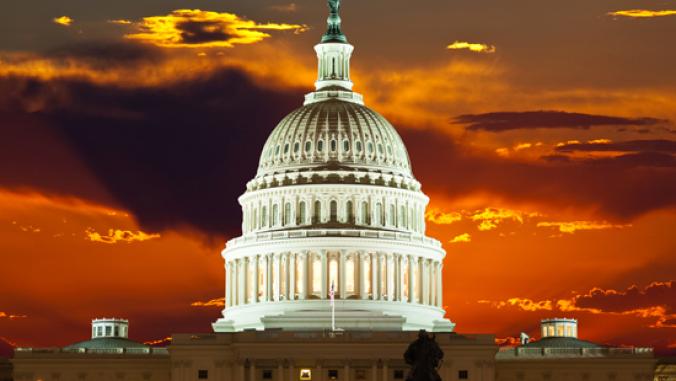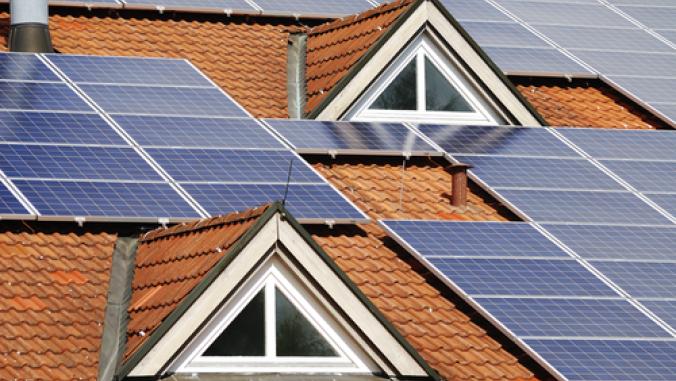The State of the Union, Green Business and the 'Harmony' Paradigm
<p>If we're lucky, President Barack Obama's speech allows us to resume a national conversation -- largely held in abeyance during the fury of the 2010 election year -- that recognizes green business as an appropriate vehicle for economic renewal.</p>

President Obama's State of the Union address this week called for new emphasis on transformative technologies and infrastructure investment, including energy efficiency and renewable energy measures.
I think that the president, in calling on Americans to muster their resilience, ingenuity and propensity for hard work, sounded the correct tone for rousing the nation from the malaise of the last several years.
If we're lucky, the president's speech allows us to resume a national conversation -- largely held in abeyance during the fury of the 2010 election year -- that recognizes green business as an appropriate vehicle for economic renewal.
To inform the conversation, I suggest that Americans consider a second green paradigm from an unusual source, the Prince of Wales, heir to the British throne and -- although his work in the field is unknown to most Americans -- a distinguished sustainability expert. In the new book and film, "Harmony: A New Way of Looking at Our World," Prince Charles and his collaborators, Tony Juniper and Ian Skelly, link the emerging green economy to a return to traditional values.
While "Harmony" encourages the use of modern science, advanced technologies, and financial modeling to improve and decision-making, its authors make the case for a return to a worldview shaped by the requirements of Nature. This paradigm is at once deeply traditional and on the leading edge of 21st century thought.
On the one hand, it is rooted in -- as "Harmony" details -- the beliefs of the venerable Western, Asian and indigenous cultures, which placed reverence for the natural world at the center of their religious, social and economic systems. On the other hand, it asks us to replace the aging and increasingly ineffective industrial systems of the last two centuries in favor of sustainable technologies and practices aimed at restoring the balance between modern societies and the natural world.
What might "Harmony's" world look like?
• Global acceptance and use of energy efficient and green practices to build and renovate property and infrastructure. As "Harmony" points out, this objective can be achieved in diverse ways. Indigenous and historic construction methods are frequently highly sustainable and energy efficient or can be combined with modern, sustainable technologies to good effect.
• New emphasis on the establishment or strengthening of self-sufficient communities, designed to encourage walkability, livability and interconnectedness. Prince Charles's Poundbury is a pioneering example of such a community. In the U.S., new urbanist principles have been used successfully to guide the design of localities and neighborhoods similar to Poundbury. The responsible property investment movement, in which I have participated for some years, champions investment in livable, walkable and green communities, as does Prince Charles's Foundation for the Built Environment.
• Increased use of sustainable farming methods and the integration of urban agriculture at the local and neighborhood levels. A return to fresh, community-grown foods promotes health, provides new connections with nature, and creates jobs. The use of energy efficient greenhouses makes it possible to source local produce year-round in diverse climates.
• Lifelong ecological education and training. An appreciation of nature and of local and global ecosystems can be incorporated in primary, secondary, university and adult education, as well as in professional training. Eco-oriented education can enrich lifelong learning for children, adults and elders, and provide preparation for entry into such 21st century professions as energy auditing, environmental engineering, or industrial design based on bio-mimicry.
• The expansion of global investment aimed at reversing climate change. Investment in this sector might range from public-private programs to develop next generation, sustainable technologies in the areas of energy efficiency, construction, agriculture and carbon sequestration, to international efforts that offer financing to developing nations and indigenous peoples to preserve the Amazon rainforest and other ecologically important sites.
As America looks to both traditional values and innovation to inform its future, Prince Charles's worldview is fresh and compelling.
Image White House photo by Pete Souza via WhiteHouse.gov





